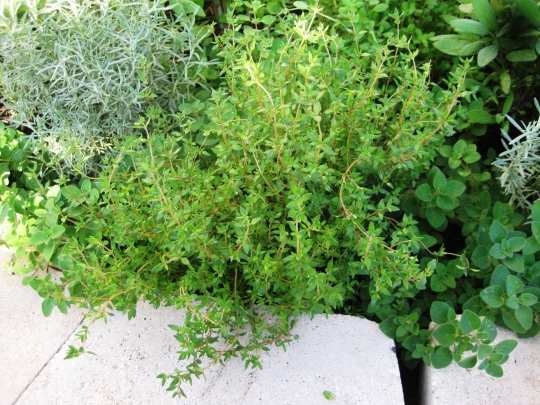
thyme #1 before trimming
No herb garden would be complete without one of my personal favorites, thyme. Thyme is a drought-tolerant evergreen plant originally from southern Europe that is valuable both for its culinary versatility and medicinal qualities. I have two English Thyme plants in the herb garden, also known as common thyme (I wish I had two more!). I use this herb in a wide variety of foods on nearly a daily basis, including marinades, rubs, sauces, vegetables, pasta, olive oil, potatoes, soups, dressing, pizza and lots more. The main constituent of the essential oil of Thyme is thymol, which is also the main antiseptic ingredient in Listerine mouthwash. Various cultures have used thyme for its antiseptic and antifungual properties. It is also quite effective as an expectorant, aiding those with colds or bronchitis. I plan on making tinctures of my harvested thyme and trying out a few different recipes.
Thyme plants are easy to propagate by layering. To do this, simply cover a vine or section of vines with a small amount of dirt, pat down and water lightly. Come back in a few weeks and that section will have rooted. At that time, simply cut the section from the main plant, dig up and replant.
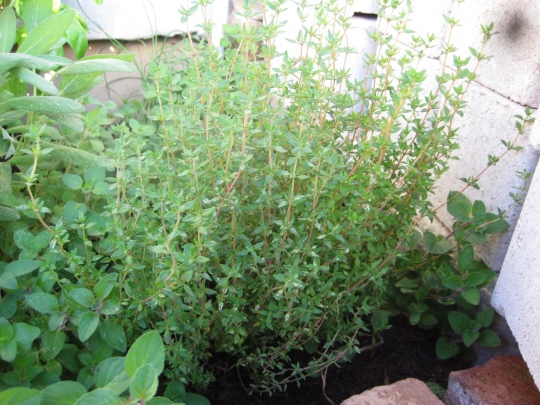
thyme plant #2 before trimming
The two tiny thyme plants I planted in late May survived the long hot summer and have really come to life this fall. The particular plants I have produce a corkscrew like pattern of vines that curl around and up more than they bush out. When they start reaching eight to ten inches tall, I like to cut them back a bit. As always, the general rule of thumb I follow is not to trim more than a third of the plant at any given time. I also take time to unravel the vines from themselves every once in awhile, allowing it to bush out a bit more.
One tip I learned is to spray the plant down with water the afternoon or evening before trimming to wash any debris away and give the herbs time to dry off before trimming and dehydrating. At first, I tried washing my herbs after picking them and they were difficult to dry that way. This method works much better. Another tip: harvesting the thyme first thing in the morning ensures the highest concentration of oils in the leaves as the oils withdraw into the stems and branches throughout the warmth of the day.
Trimming thyme is extremely easy. The main part of the plant produces more woody vines and branches that I do not touch, but all of the newer growth can be trimmed back anywhere along the vine. I trim mine right above a cluster of leaves, which forces the vine to branch out and produce more growth to be trimmed in the future.
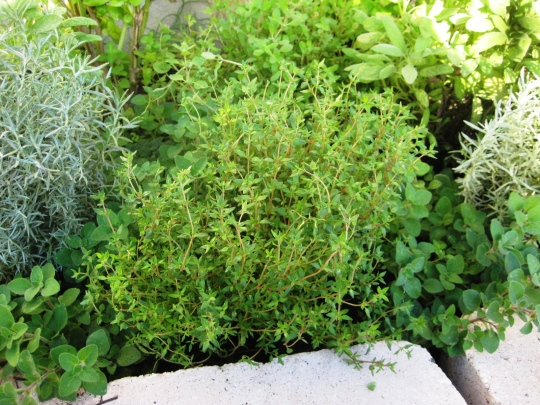
thyme plant #1 after trimming
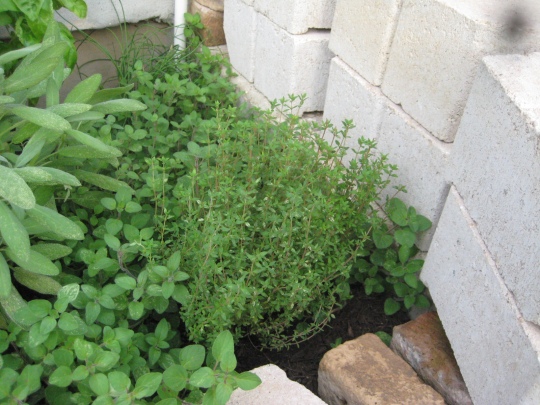
thyme plant #2 after trimming
Drying thyme is also very simple. I wrap the cut thyme in small bundles with hemp cord and hang them to dry. The small leaves of the thyme branches dry fairly quickly – faster than the the other herbs I harvest – and retain their flavor through dehydration and storage.
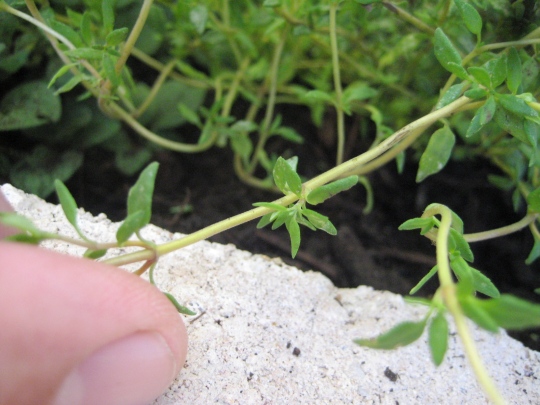
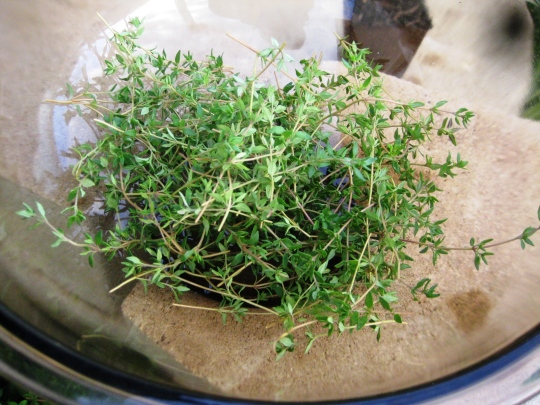

Comments on: "How to Harvest Thyme" (2)
#goodforyoufuntoo made simple. fun. giving this a try today!
I love thyme, and use it in almost everything. Thanks for the tips, I can’t wait for my first harvest of fresh thyme. Delicious.